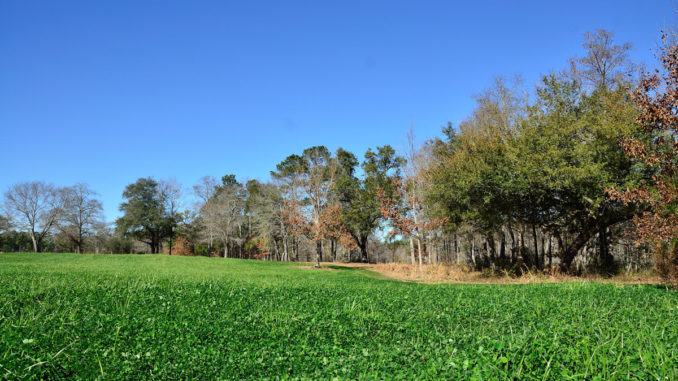
Photosynthesis can help food plots grow better
With deer season creeping up, it’s time for food plotters to scratch out a plan and make any last-minute changes before the seeds go in the dirt.
Nothing matches creating a food source deer will crave when it becomes legal to pop one with an arrow or rifle. Even though some food-plot growers produce great plots by using the right tools, there is always room for improvement. Hunters can improve their plots by incorporating a wide variety of tactics, from fertilizing and liming to herbicide use and proper seed choice. And a sure-fire way to improve productivity is to promote photosynthesis.
Plants create energy from the sun through photosynthesis. Specifically, the light energy is absorbed by plant proteins that contain green chlorophyll. The light energy splits water molecules into oxygen and hydrogen; the oxygen is released into the air and the hydrogen is transferred to usable energy molecules that will be later become carbohydrates the plants will use for energy and production. In order to make photosynthesis possible, sufficient water and sunlight are critical components.
While tucking a food plot deep in the woods can take pressure off a mature buck looking for an easy meal, secluded food plots often are narrow and shaded for most of the day, detracting from optimal forage production. There is nothing wrong with nestling a narrow food plot back in the wilderness, but the tall sun hogs towering above its perimeter can have a dramatic effect on the ability for photosynthesis at optimum levels.
Typically, the sun arcs across the southern sky. Any large trees or overgrown shrubs along a plot’s southern edges, including the eastern, southeastern, western, and southwestern quadrants, should be trimmed or removed to allow longer durations of full sunlight. The more hours of sun these plants receive produce dividends in rapid growth and forage production.
In addition to sun, food-plot plants need adequate soil moisture to complete the chemical reaction and provide the critical hydrogen ions used for energy molecule production. During periods of normal rainfall, most sites will have adequate soil moisture, but late summer and early fall can bring hot, dry weather that can dry out a food plot in a hurry. Landowners can divert water flow with shallow ditches leading into the site in an attempt to capture rain water and sheet-flow it across the plot. Or plots can be irrigated from shallow wells or the closest available water source.
Irrigation pumps can be run off a nearby electrical source, but electric power near a food plot is rarely available most of the time. Gas-operated pumps are a good option to come in and irrigate a food plot. Not only can a gas-operated pump provide supplemental irrigation, the loud noise coming from the pump’s motor will deter deer and other wildlife from using the plot while it’s being established.
One of the greatest causes of food-plot failures results from over-browsing early in the game. The noise and irrigation actions will help prevent usage until pumps are removed and it’s ready for hunting.
While a thorough, daily watering is optimum, it is not always practical to fill up an irrigation pump with fuel daily to irrigate a plot. When it’s hot and dry, food plots will need several inches of water per week, depending on the soil type and location on the landscape. For best results, plots should be watered thoroughly once or twice a week.
Food-plot growers can’t control everything — surely not Mother Nature — but with effort and dedication, they can have the sunlight and water to grow and produce maximum yields. When the season arrives, the hard work and dedication will be worth it when a buck calls these food plots home.




Be the first to comment